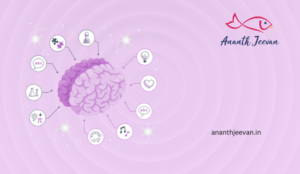
During the 20th century, emotions were disparaged by psychology research and practice. The public and professionals considered emotion as a detrimental thing to include in rational decision-making; emotions were not acknowledged as an essential component. Research in emotions were popularized in the 21st century and categorized as positive and negative emotions and how to adapt to these emotions.
Daniel Goleman popularized the concept of emotional intelligence in the 1990s and emphasized why EQ is more important than IQ. Emotional intelligence is the ability to perceive emotions, access and generate emotions to assist thoughts, understand emotions and emotional meanings, and reflect on and regulate emotions to promote better emotions and thoughts.
The Salovey and Mayer four-branch ability model of emotional intelligence predicts the skills that are needed to reason about the emotions experienced. There are four branches of the model of emotional intelligence proposed by Salovey and Mayer.
Branch 1: Perceiving Emotions
The ability to identify and express emotions requires the ability to pick up the subtle emotional cues. For example, a person who is skilled at perceiving emotions can determine what to say and what not to say based on the other person’s non-verbal behavior. The skill of perceiving others emotions becomes a competency that is needed to acquire the other three emotional intelligence competencies.
Branch 2: Using Emotions to Facilitate Thought
Using emotional understanding to facilitate our thinking People who are emotionally intelligent can control their emotions and work with them to improve problem-solving and enhance their creativity. The emotional experiences that are generated are used to prioritize cognitive demands. For example, a woman has to make an essential decision about her friendship. Should she invest her energy in the friendship that has been on the rocks, or should she cut her losses and end the friendship in a civil manner? How does she feel physically and emotionally when she thinks about continuing or ending the friendship? This emotional information is focused on coming up with a solution to handle the friendship.
Branch 3: Understanding Emotions
An ability to understand the complex of emotions, relationships among emotions, and relationships between emotions and behavioral consequences A person with a heightened understanding of emotions knows what the appropriate way is to respond to the person or situation. They have a good understanding of emotions such as jealousy and envy and how these emotions can trigger maladaptive interpersonal behavior. Understanding these complex emotions and using these emotions to choose the right course of action depicts a high level of emotional intelligence.
Branch 4: Managing Emotions
Managing emotions involves a number of emotional regulation skills. These are the difficult skills to obtain, as they require striking a balance. Too much regulation can lead to repression or suppression, and too little regulation can make one feel overwhelmed.
Emotional intelligence determines the nature of person to person interactions, social functioning, and our personality traits to an extent.
Share
Here to help
If you need help, Ananth Jeevan is here.
- Call our helpline (+91-9063-Jeevan) to talk to our counsellors
- Download the AJ App (on Android and AppStore )
- For Counselling appointments, use our WhatsApp number



